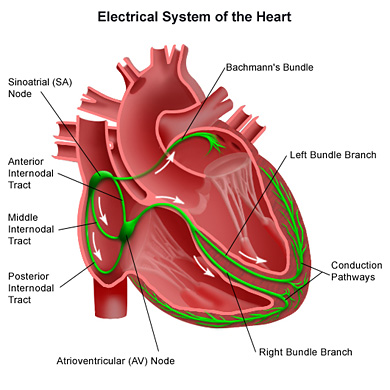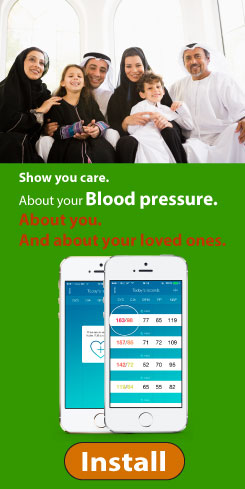What are arrhythmias
Arrhythmias is a malfunction of successive beats of the heart. The heart muscle shrinks in a certain rhythm. This forms a kind of rhythm conduction system. It is represented by nodes, bundles of nerve tissue, the accumulation of these cells and nerve fibers is placed in the field of the myocardium; there it generates all the pulses of the heart and conduct them.
There are different kinds of arrhythmias, but evertheless heart rate fails, which may end in an increase rate (tachycardia) or, conversely, a decrease rate (bradycardia). At the same time heart contractions may remain normal. In a healthy human heart rate is about 60-70 beats per minute.
What heart rate or pulse is considered to be normal?
Person’s heart rate(i.e. the pulse) means the amount of heart contractions per minute. The heart rate can vary widely, it all depends on what demands we make to our body. Normally it is 60to 100 times a minute. For example, while sleeping person will have much lower heart rate whencompared with the period of training.
Atria contract first and pass blood to the ventricles. The quantity of ventricles’ contractions is a heart rate. And then blood passes to artery. It’s contractions is what we call pulse.
Arrhythmias causes.
Luckily, it work the way, that almost any part of your heart can start a heartbeat. So if something wrong with the starter, still heart will contract. So if the usual manner of work is disturbed, another part of the muscle will act as a pacemaker.
What are the arrhythmias symptoms and theirs treatment?
As we all know, heartbeat can be either too slow, or too fast. Both of the cases are abnormal and must be treated. Bradycardia (or extra slowing of beat) can result in fainting or faintness, fatigue, dizziness. Nowadays the problem is readily solved by implantes – electronic pacemaker. Tachycardia (fast heartbeat) is characterized by the same symptoms, plus rapid palpitations, of course. And moreover so as heart muscle works too effectively, rhythm can be regular or not because of its fatigue.
The overwork can start both in ventricles and in atria. If it happened in ventricles, the problem is called ventricular tachycardia. The situation is life-threating. The most terrible disturbance in rhythm is ventricular fibrillation; it means that the heart chambers are weak and shaking, so far they can’t pump blood. If professional help is not performed at once, heart collapses and death ensues.
The diseases must be found out and treated timely, if so they can be stopped with the electrical equipment and normal rhythm will be brought back. After proper diagnosing, tachycardia can be fixed by medicines aiming at the cause of heart disturbance. Today cardioverter, or defibrillator, that gets implanted under skin is a real godsend for all people with heart disease.
Over 2 million of Americans suffer from atrial fibrillation. It’s characterized by forming of blood clots and the atria tremble instead actual beating. Thus, blood stagnates in the chambers pooling and clotting without changing. If those clots leave heart and flow through artery inthe brain, happens a stroke (brain attack). The atrial fibrillation is the main cause of the strokes.





